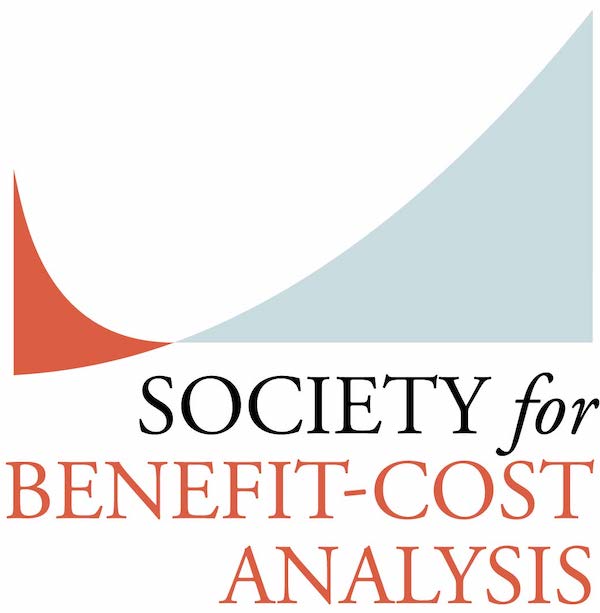
Economists have for decades recommended that carbon dioxide and other greenhouse gases be taxed to provide incentives for their reduction. The United States does not have a federal carbon tax; however, many state and federal programs to reduce carbon emissions effectively price carbon—for example, through cap-and-trade systems or regulations. There are also programs that subsidize reductions in carbon emissions. At the 2022 meetings of the American Economic Association, the Society for Benefit-Cost Analysis brought together five well-known economists—Joe Aldy, Dallas Burtraw, Carolyn Fischer, Meredith Fowlie, and Rob Williams—to discuss how the United States does, in fact, price carbon already and how it could do so more effectively. Maureen Cropper chaired the panel.
Meredith Fowlie discussed problems that a carbon tax would present if levied on the US energy sector. As Fowlie pointed out, setting a carbon tax equal to the social cost of carbon assumes that the prices of carbon-intensive goods reflect suppliers’ marginal private costs. In many US states, however, regulated retail electricity and natural gas prices exceed marginal supply costs—in the case of electricity, sometimes by a factor of two to three. Electricity prices have risen to cover the costs of upgrading generation, transmission, and distribution systems and making the grid more resilient to extreme weather events. Adding a carbon tax to these prices would slow the pace of electrification for the clean energy transition and would burden low-income households. Fowlie discussed these issues and suggested that retail rate reform is needed.
Joe Aldy presented an overview of clean energy subsidies that the federal government has provided to reduce carbon emissions. These include investment and production tax credits for renewable energy sources, loan guarantees for renewable power, and state block grants to promote energy efficiency. Aldy discussed the limitations of these subsidies relative to a carbon tax. Whereas a carbon tax would provide a price signal throughout the economy that would tend to equalize marginal abatement costs, clean energy subsidies do not. And because of their limited lifetime, clean energy subsidies do not usually provide dynamic incentives for emissions reductions. Aldy discussed how specific clean energy subsidies could be redesigned to better mimic a carbon tax. He also suggested using formal program evaluation to improve the design of subsidies to reduce carbon emissions.
Dallas Burtraw reviewed the barriers to implementing carbon pricing and noted nonetheless that it is important that we price carbon. Pricing carbon encourages cost-effective reductions in greenhouse gases (GHGs), rewards technological innovation to reduce carbon emissions, and helps coordinate activities to decarbonize the economy. To move in the direction of pricing carbon, Burtraw argued for formulating an industrial policy that mimics a carbon tax but is politically acceptable. One way to do this is to couple regulatory standards with sector-specific subsidies. Tradable emissions performance standards, such as California’s Low Carbon Fuel Standard, are an example. Burtraw discussed the extent to which tradable performance standards embody the attributes of a carbon tax.

 On June 30, 2022, the Supreme Court of the United States decided West Virginia v. Environmental Protection Agency. The case was about whether EPA in the Clean Power Plan could set the carbon emissions standard for existing power plants at a level that would require the power plants to reduce coal use and shift to or subsidize natural gas or renewable-energy electricity generation (referred to as “generation shifting”). But the focus was not on whether such a level would be benefit-cost justified—but rather on whether the agency was allowed to set a standard requires generation shifting for compliance under this provision of the Clean Air Act. Writing for the majority, Chief Justice Roberts applied the “major questions” doctrine and concluded that EPA could not do this despite reasonable textual support for it; on issues like this one, which have “vast economic and political significance,” Congress must clearly authorize an agency to act in this way.
On June 30, 2022, the Supreme Court of the United States decided West Virginia v. Environmental Protection Agency. The case was about whether EPA in the Clean Power Plan could set the carbon emissions standard for existing power plants at a level that would require the power plants to reduce coal use and shift to or subsidize natural gas or renewable-energy electricity generation (referred to as “generation shifting”). But the focus was not on whether such a level would be benefit-cost justified—but rather on whether the agency was allowed to set a standard requires generation shifting for compliance under this provision of the Clean Air Act. Writing for the majority, Chief Justice Roberts applied the “major questions” doctrine and concluded that EPA could not do this despite reasonable textual support for it; on issues like this one, which have “vast economic and political significance,” Congress must clearly authorize an agency to act in this way. China is investing trillions of dollars in hundreds of projects, mainly infrastructures under its Belt and Road Initiative. This Initiative termed the BRI seeks to increase trade and contribute to global economic growth through increased connectivity, ports' development, building transport networks, pipelines, and other major infrastructures stretching from the northwestern part of China through Central Asia and Middle East through Africa and onwards to Europe.
China is investing trillions of dollars in hundreds of projects, mainly infrastructures under its Belt and Road Initiative. This Initiative termed the BRI seeks to increase trade and contribute to global economic growth through increased connectivity, ports' development, building transport networks, pipelines, and other major infrastructures stretching from the northwestern part of China through Central Asia and Middle East through Africa and onwards to Europe. Hedonic property value regression is a leading technique for estimating how much consumers are willing to pay for nonmarket amenities. The prevailing style of estimation has evolved in recent years to incorporate insights from the “credibility revolution” in applied economics, with high expectations for data quality and econometric transparency. At the same time, recent research has improved our understanding of how parameters identified by quasi-experimental designs relate to welfare measures. This post describes an article summarizing modern best practices for developing credible hedonic research designs and valid welfare interpretations of the estimates. I wrote the article together with Kelly Bishop, Spencer Banzhaf, Kevin Boyle, Kathrine von Gravenitz, Jaren Pope, Kerry Smith, and Christopher Timmins. It was published in the Summer 2020 issue of the Review of Environmental Economics and Policy as part of a symposium on best practices for using revealed preference methods for nonmarket valuation of environmental quality. A 20-minute video summary is posted
Hedonic property value regression is a leading technique for estimating how much consumers are willing to pay for nonmarket amenities. The prevailing style of estimation has evolved in recent years to incorporate insights from the “credibility revolution” in applied economics, with high expectations for data quality and econometric transparency. At the same time, recent research has improved our understanding of how parameters identified by quasi-experimental designs relate to welfare measures. This post describes an article summarizing modern best practices for developing credible hedonic research designs and valid welfare interpretations of the estimates. I wrote the article together with Kelly Bishop, Spencer Banzhaf, Kevin Boyle, Kathrine von Gravenitz, Jaren Pope, Kerry Smith, and Christopher Timmins. It was published in the Summer 2020 issue of the Review of Environmental Economics and Policy as part of a symposium on best practices for using revealed preference methods for nonmarket valuation of environmental quality. A 20-minute video summary is posted  Modernizing Regulatory Review, a Presidential memorandum published January 20, 2021, serves as a preface to the regulatory policies of the Biden Administration. As such, the memorandum complements three executive orders (E.O 13993: Revocation of Certain Executive Orders Concerning Federal Regulation; E.O. 13990: Protecting Public Health and the Environment and Restoring Science to Tackle the Climate Crisis; and E.O. 13979: Ensuring Democratic Accountability in Agency Rulemaking) that collectively rescind the previous administration’s regulatory policy. The regulatory policy foreshadowed in the memorandum and other documents, however, goes beyond rescinding the Trump administration’s program or restoring previous regulatory regimes.
Modernizing Regulatory Review, a Presidential memorandum published January 20, 2021, serves as a preface to the regulatory policies of the Biden Administration. As such, the memorandum complements three executive orders (E.O 13993: Revocation of Certain Executive Orders Concerning Federal Regulation; E.O. 13990: Protecting Public Health and the Environment and Restoring Science to Tackle the Climate Crisis; and E.O. 13979: Ensuring Democratic Accountability in Agency Rulemaking) that collectively rescind the previous administration’s regulatory policy. The regulatory policy foreshadowed in the memorandum and other documents, however, goes beyond rescinding the Trump administration’s program or restoring previous regulatory regimes. The revelations of the
The revelations of the  Benefit-cost analysis, as usually practiced, sums the monetary values of effects on individuals. It can be justified by the potential compensation test: if the total monetary gain to the “winners” (those who gain from a policy) exceeds the total monetary loss to the “losers” (those who are harmed), the “winners” could (in principle) pay compensation to the “losers” so that everyone would judge herself better off with the combined policy and compensation than without. The idea is that by summing the net benefits across individuals, BCA measures “efficiency” or the size of the social pie, and that questions about distribution can be evaluated separately. Logically, policies that expand the social pie permit everyone to have a bigger slice; a smaller pie guarantees that at least some people get a smaller slice.
Benefit-cost analysis, as usually practiced, sums the monetary values of effects on individuals. It can be justified by the potential compensation test: if the total monetary gain to the “winners” (those who gain from a policy) exceeds the total monetary loss to the “losers” (those who are harmed), the “winners” could (in principle) pay compensation to the “losers” so that everyone would judge herself better off with the combined policy and compensation than without. The idea is that by summing the net benefits across individuals, BCA measures “efficiency” or the size of the social pie, and that questions about distribution can be evaluated separately. Logically, policies that expand the social pie permit everyone to have a bigger slice; a smaller pie guarantees that at least some people get a smaller slice.